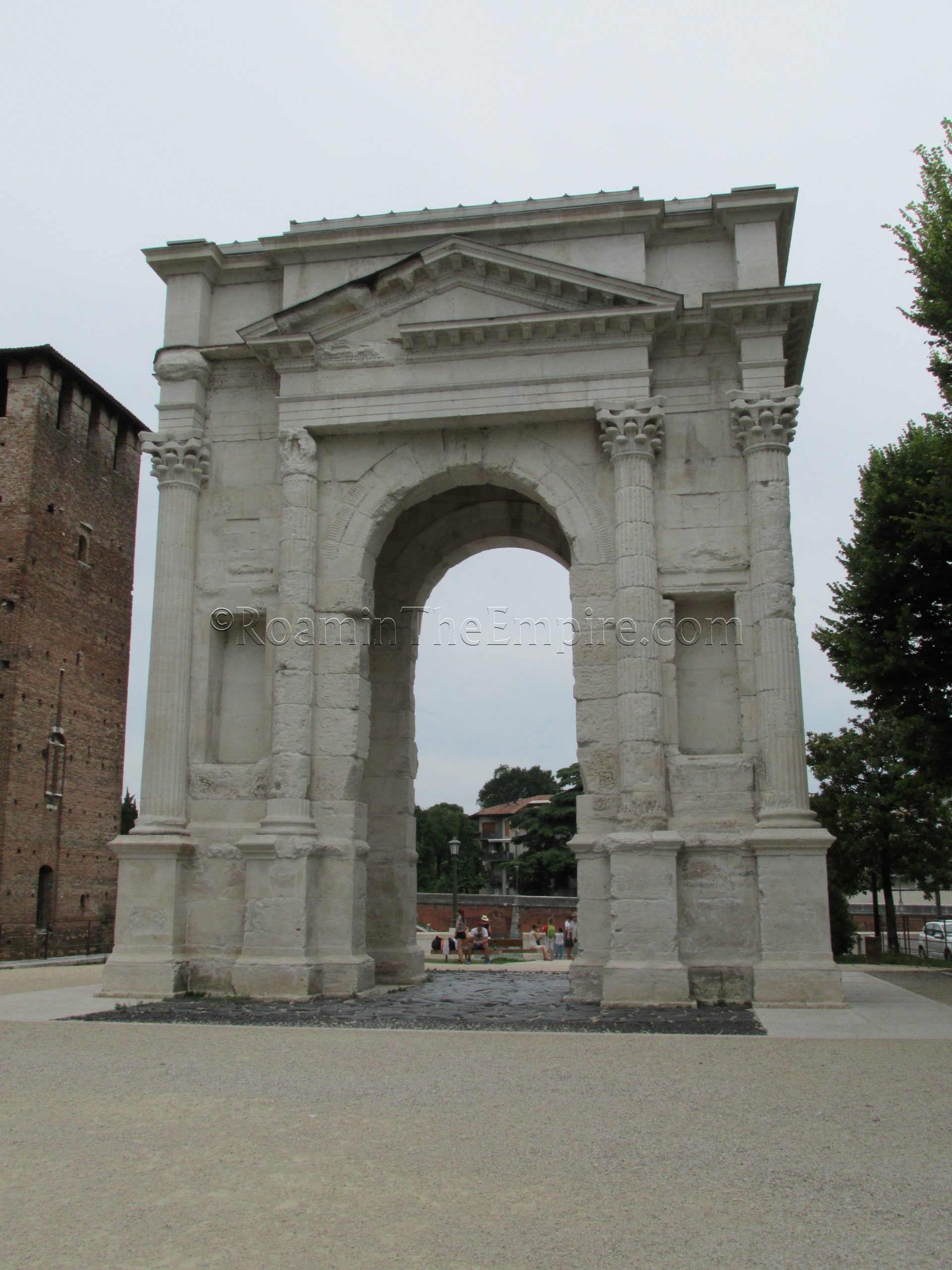
Arch, Gates, and Forum
From the amphitheater, it’s a short 5 minute walk west to the Arco dei Gavi, the arch of the Gavii family. There is no entrance fee though there is a small gate that might restrict access at some times. Even with the gate, the arch is always visible from the outside. The Gavii were an influential family in Verona and the decorative arch was apparently situated near the entrance of the Via Postumia into Verona. Originally constructed in the 1st century CE, but the arch that stands today is, unfortunately, a total reconstruction, using some original materials, completed in the 1930’s after it was destroyed by Napoleonic troops in the 19th century. It is not in its original location. Inscriptions below the niches noted Gavii family members, and another inscription on the monument noted the construction by the architect Lucius Vitruvius Cerdo, likely not related to the famous architect Vitruvius, but mistakenly attributed to him in the past. A section of road is also preserved running through the arch.
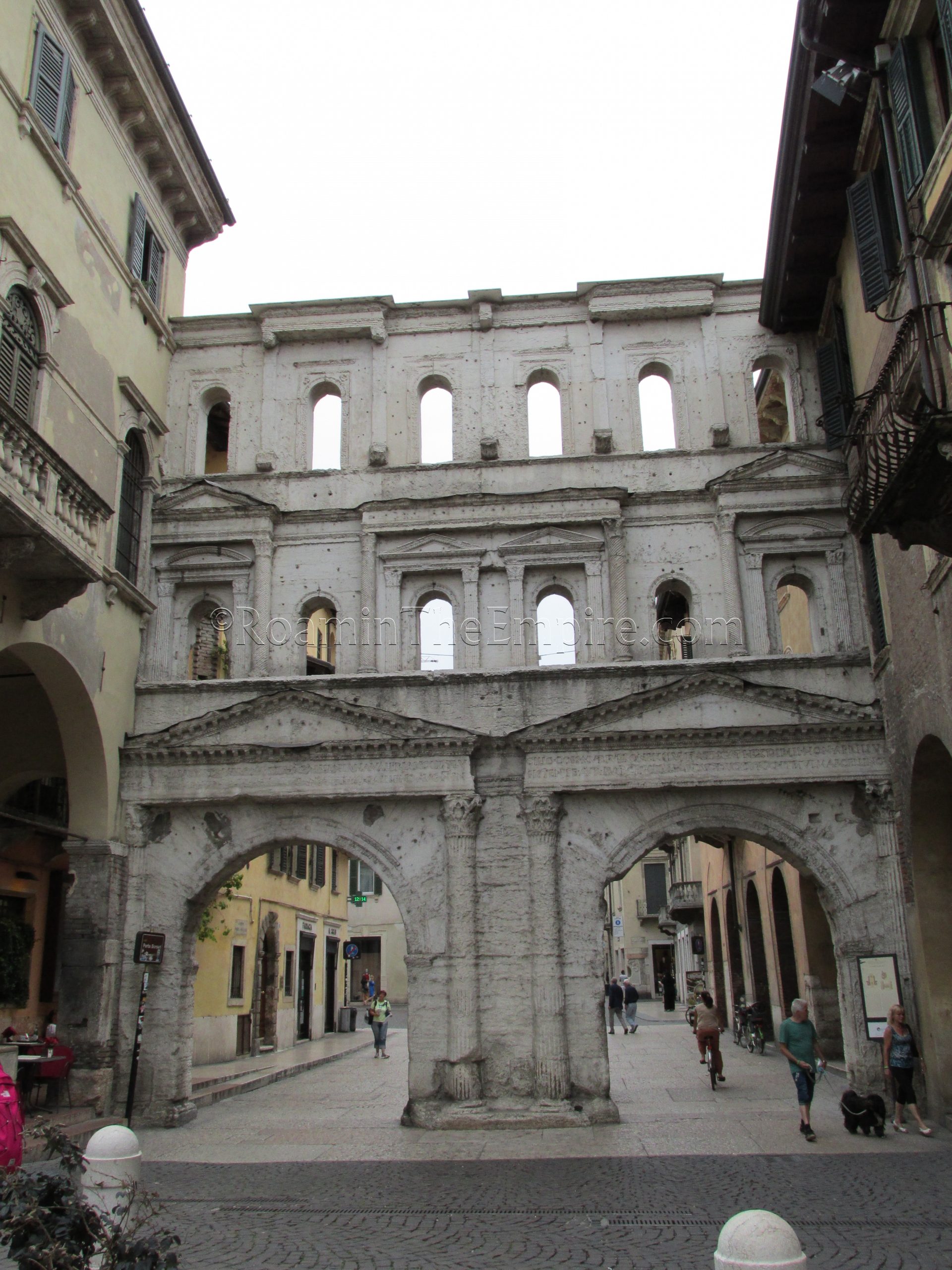
From this arch, it’s a short walk along the Corso Cavour to the so-called Porta Borsari, the primary entrance to Verona and the start of the decumanus maximus. Called the Porta Jovia, likely a reference to its proximity to a temple to Jupiter, the original brick gate was built during the expansion of the city walls around 50-40 BCE. Under Claudius, the monumental façade visible today was added on the western side of the courtyard of the gate structure. An inscription above the entrances on the western (exterior) façade notes the restoration of the wall by Gallienus in 265 CE. The Porta Borsari is in a public area, accessible at all times. There is a small sign on the west side with Italian and English information. The present name reflects the usage as a point of the collection of duties on goods entering the city during the medieval period.
Continuing through the arch, the street turns into a pedestrian road, the Corso Porta Borsari, which can be followed for about 5 minutes until it leads out onto the north side of Piazza delle Erbe. In the Roman city, Piazza delle Erbe was the location of the forum, eventually being developed into the piazza that stands now. There are elements of Roman materials being used as spolia in the buildings surrounding the square. Excavations have revealed the presence of the Capitolium adjacent to the piazza, but these are no longer visible. On the north side of the piazza, is the Fontana Madonna Verona. The statue of the Madonna used in the fountain is ancient in origin, dating to the 4th century CE, but with medieval replacement of the head and arms. Since it is a public piazza, the statue can be seen any time.
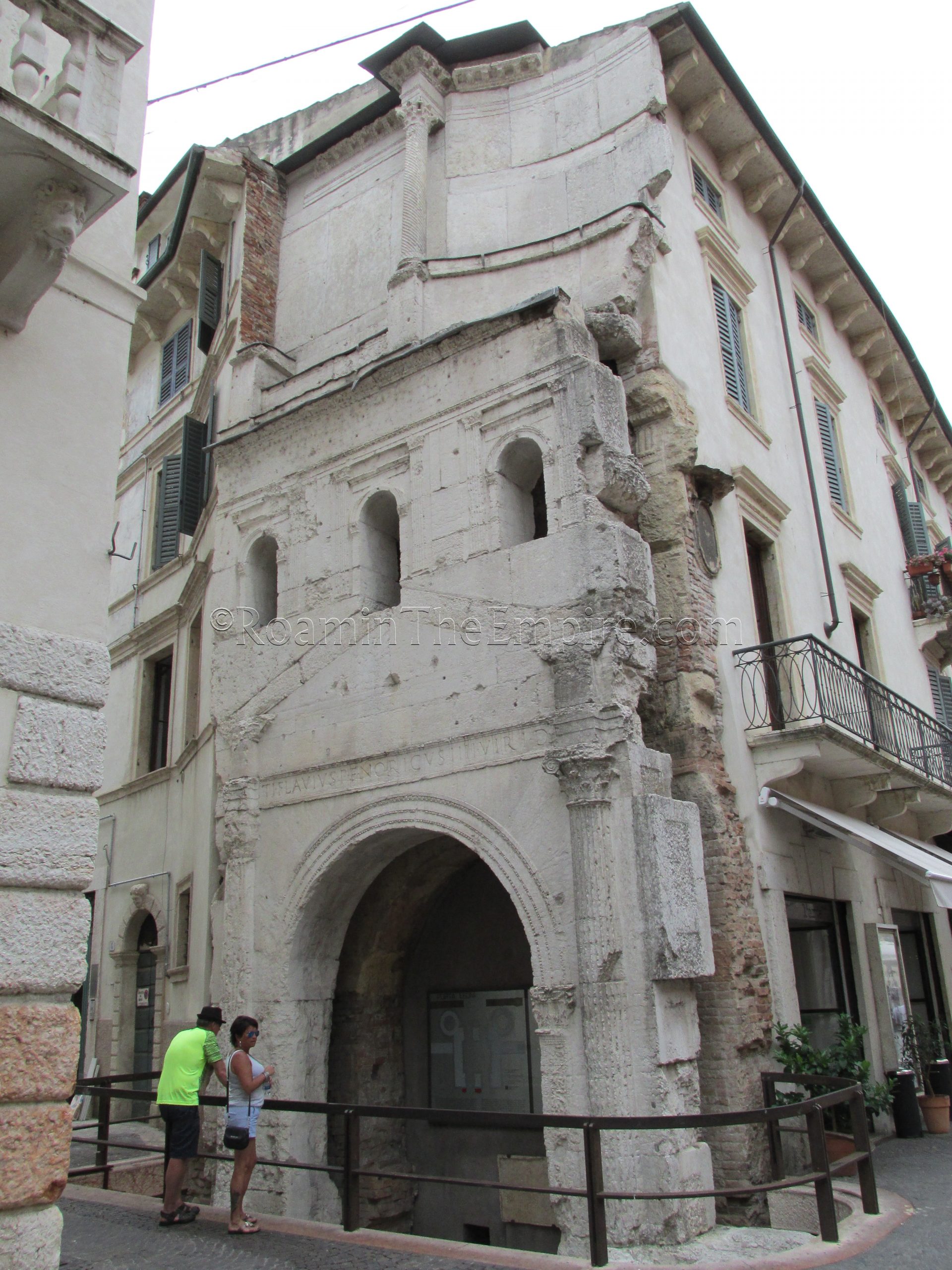
Heading down the street that leads out of the Piazza delle Erbe to the south for about 5 minutes leads to the Porta Leoni, named after a sarcophagus depicting two lions was found nearby. It is, of course, no coincidence that the Porta Borsari and the Porta Leoni are equidistant from the Piazza delle Erbe. Like the Porta Borsari, the Porta Leoni was originally part of the walls constructed around 50-40 BCE with a later embellishment in the early imperial period. The remains of the brick foundations of part of the wall and one of the large towers that flanked the gate are exposed in the middle of Via Leoni, while part of the imperial era façade is preserved in one of the walls of the adjacent building. An inscription above the surviving gate of the imperial façade attributes the restoration by one Titus Flavius Noricus, a quattuorvir. This imperial additions differs from the Porta Bosari in form, instead having an exedral type form on the upper registers between the entrances, rather than the archways of the Porta Bosari. During the Gallienus reconstructions, the line of the wall was moved closer to the riverfront, just beyond the towers. This gate marked the southern start of the cardo maximus in the city. The remains of the gate are freely accessible at all times and there is an informational sign in English and Italian posted inside the imperial façade area.
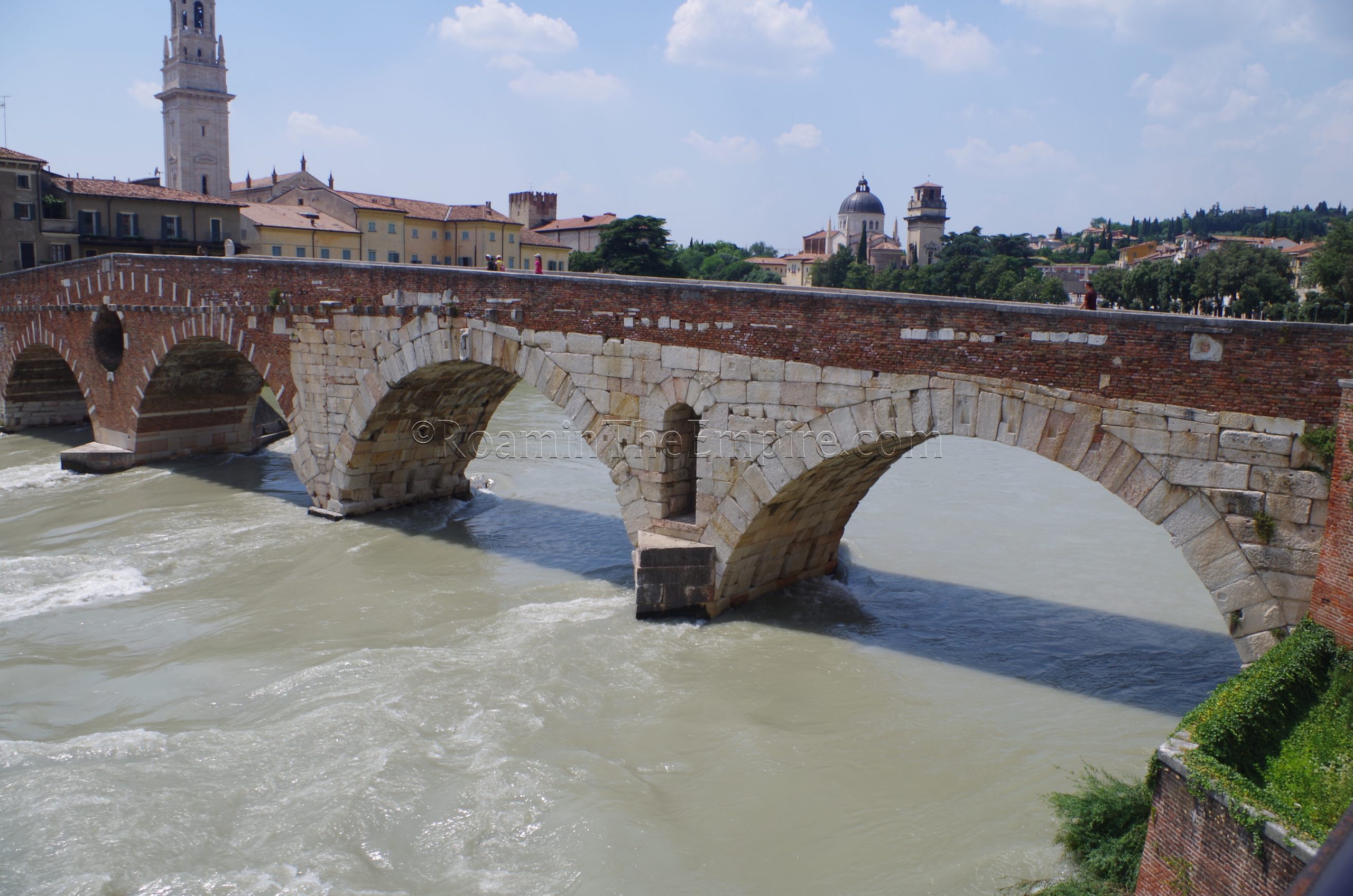
Ponte Pietra
From the Porta Leoni, it is a short walk to the Ponte Pietra, the stone bridge. Originally constructed around 100 BCE, the bridge carried the Via Postumia over the river, which was originally done by the Pons Postumius down river; though both bridges continued to be used until the Pons Postumius fell apart. There were heavy restorations in the 13th century CE, and in 1945, retreating German troops blew up most of the bridge to cover their escape. It was reconstructed in 1957 using original materials. The white stone notes the two ‘original’ Roman arches of the bridge. Other Roman elements visible along the path of the bridge, including an inscription, are re-used in the medieval brickwork. The somewhat faded brick arch closest to the south shore is the only original medieval arch that was not destroyed in 1945.
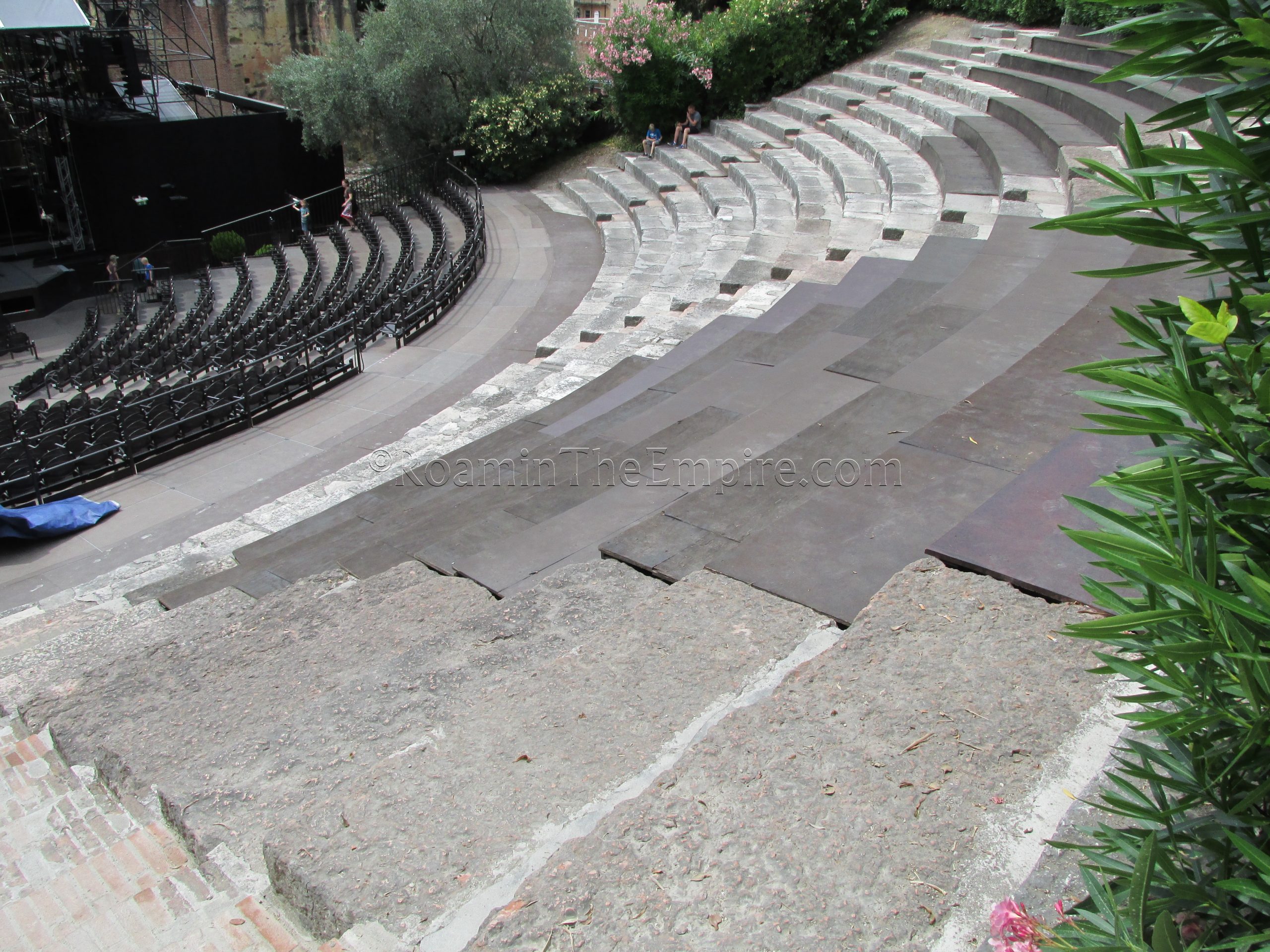
Archaeological Museum and Theater
Taking the Ponte Pietra across the river to the north side is the final stop on the Roman tour of Verona is the Museo Archeologico al Teatro Romano, which is the location of both the city’s archaeological museum and the Roman theater. Located at Rigaste Redentore 2, the complex is open Tuesday through Sunday from 11:00 to 17:00. It is closed on Mondays. Admission is 4.50 Euro for both the museum and theater. At times (such as when I first visited and the museum was in the midst of renovations) the museum may be closed but the theater can still be visited for a slight reduction in price.
The theater was originally constructed in the late 1st century BCE. The proximity to the river necessitated the construction of some embankments on that side of the river to shore up the land on which the theater was built. Like the amphitheater, there is a lot of reconstruction and modern seating to make the venue accessible for modern performances, and as such, in the summer, there is modern seating and stage elements obscuring some of the ancient remains. The supports for the no longer extant upper levels of cavea are perhaps the most striking original elements of the theater.
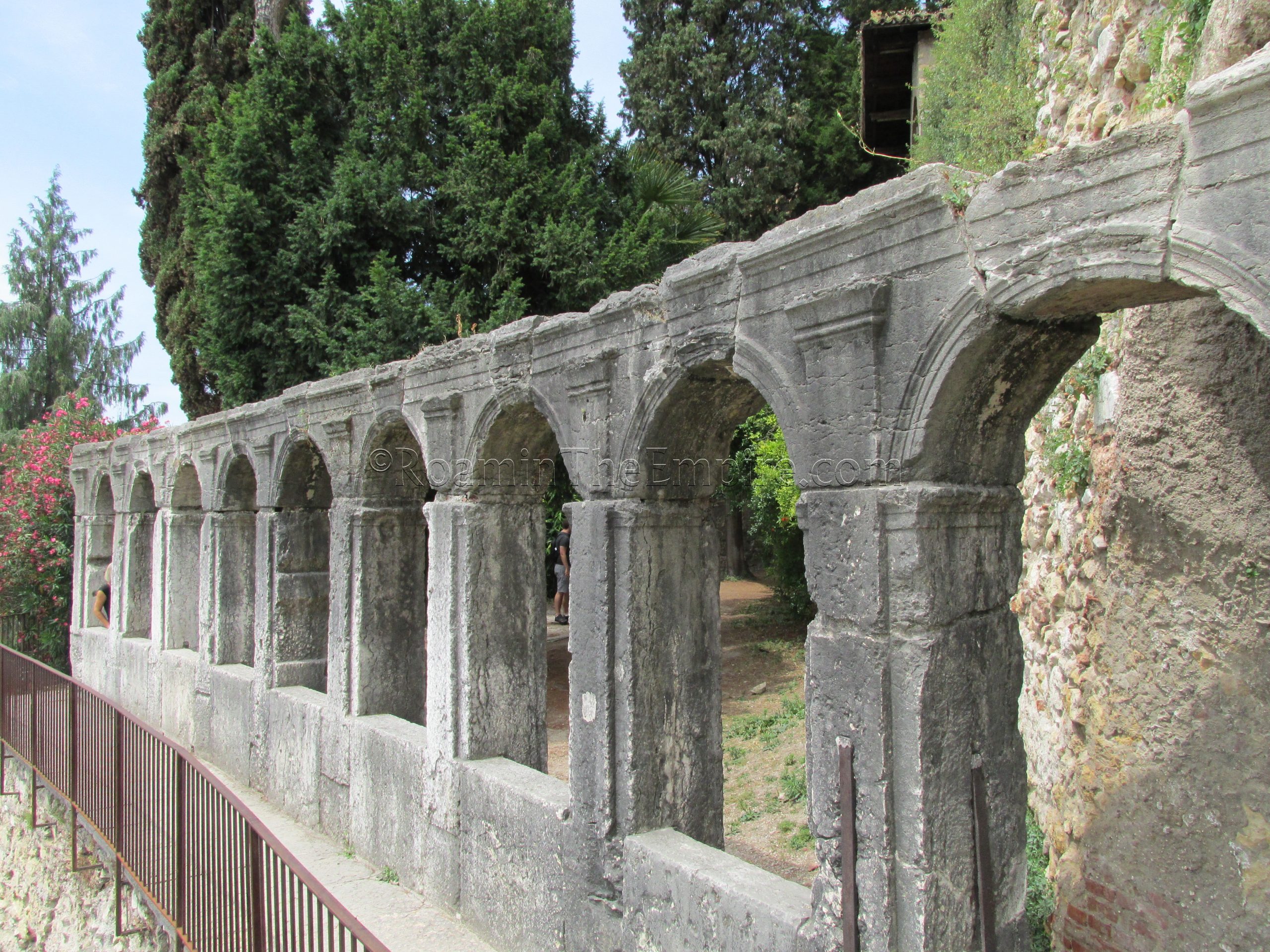
Climbing up to the upper reaches of the theater, there is also a terrace with a gallery that served as a balcony of sorts above the cavea during the Roman period. Amid the windows of the gallery, there are some inscriptions, which try as I might, I have not been able to find any reliable information on. They appear to be gens names (Valeria and Priscia are names I could clearly make out), and there is an inscription of ‘Gavi’ which would fit with a reference to the important local family responsible for the previously mentioned arch, and who were reputedly patrons of an earlier theater.
Terraces above the gallery were apparently the location of a temple in antiquity, now at least partially home to the Convento San Girolamo, which houses part of the archaeological collection. A few of the terraces above the convent/archaeological museum have ancient origins, but are largely 16th century reconstructions of the Italian architect Andrea Palladio, with some doubt given to the accuracy of these reconstructions. A courtyard on the north/northwest side of the theater hosts a lapidary garden with a number of inscriptions of several different types as well as some fragments of architectural decoration.
Adjacent to the theater is the archaeological museum, which is housed partially in the convent and accessible at the theater ground level. My first time in Verona in 2015, the archaeological museum was closed due to ongoing renovations, but, it was reopened the following year, and so I was able to visit in 2019.
The newly renovated areas of the museum were very nice and it was a very modern display. The one real drawback was that they were pretty heavy handed about not allowing pictures in those parts of the museum. There was a docent that followed us around to make sure we didn’t take any pictures. Which is a real shame, because there were some very interesting pieces (a few of which I managed to sneak some pictures with my phone). The idea of limiting photography seems kind of counterproductive to me, especially with collections that are not digitized, so that’s always a big drawback for a museum in my estimation.
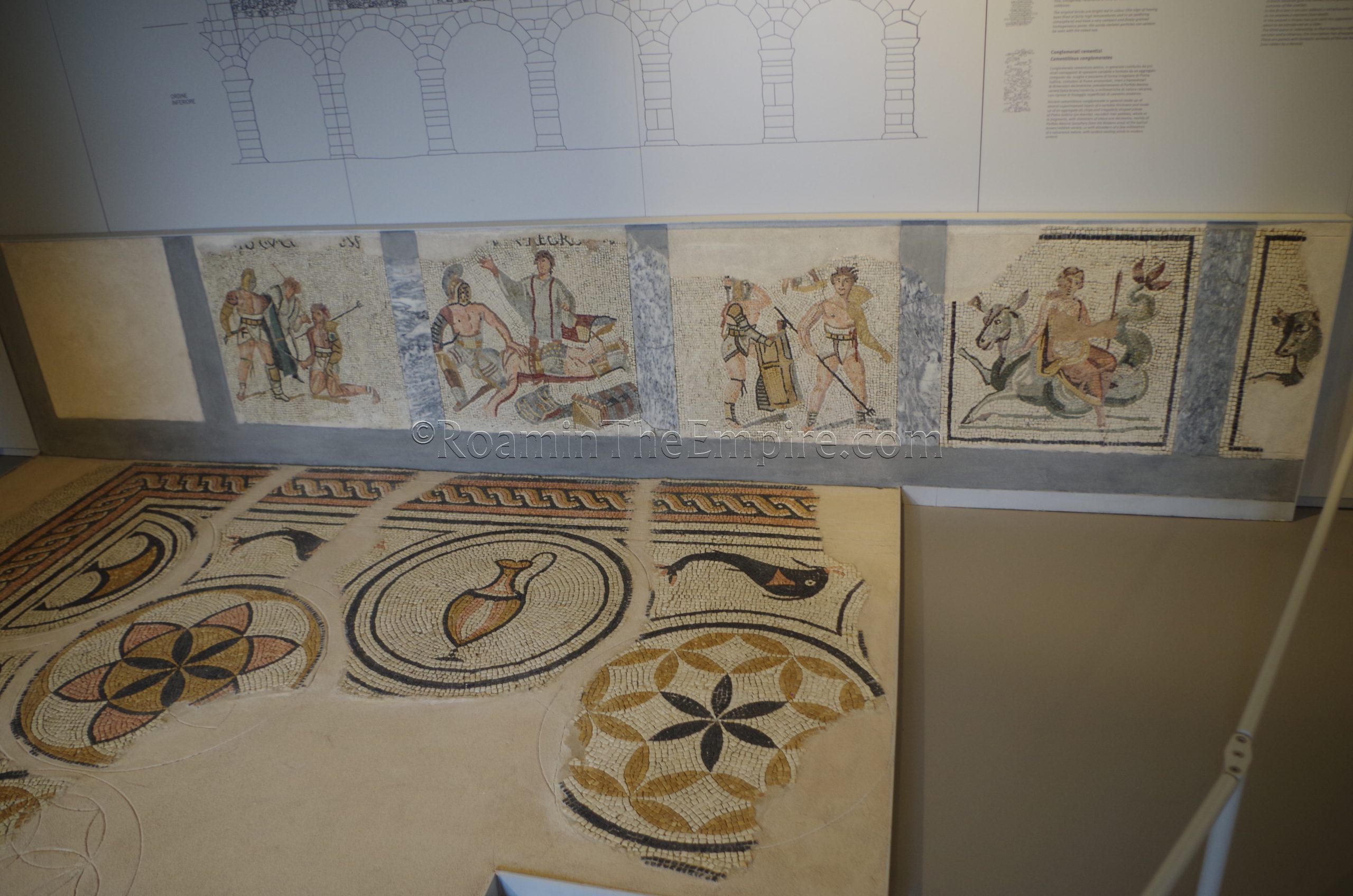
Some of the older areas of the museum, particularly those in the top levels, adjacent to the outdoor garden area of the convent were less closely regulated. Some of the rooms were even bereft of any guards or docents to prevent this. The outdoor garden area served as a sort of lapidarium with random inscriptions and architectural elements. There was no information posted about any of the pieces, which was in contrast to most of the museum, which had excellent information posted in both Italian and English for most pieces.
There are some interesting pieces in the museum; a lot of inscriptions, some mosaics, small finds, and statuary. The gladiator wall mosaic was one piece that sticks out as particularly interesting. Notably, there was a dedication to Jupiter Lustralis, to whom the temple that gave the Porta Jovia (Porta Borsari) was dedicated specifically. It was an overall quick run through the museum, but it took about an hour, though I could see spending about an hour and a half there without any sort of time constraints.
Though the city is famous as the setting of Shakespeare’s Romeo and Juliet, and many tourists flock to see the sites linked to the play and the associated medieval architecture, the city has a pretty robust and accessible Roman heritage as well. All told, the Roman sites of Verona could comfortably be fit into a day, and is certainly well worth a visit.
Sources:
Bolla, Margherita. The Verona Arena: The Building and its History in 1913-2013. Milan, 2013.
Livy. Ab Urbe Condita, 1.1, 5.35, 32.30
Grant, Michael. A Guide to the Ancient World: A Dictionary of Classical Place Names. New York: Barnes & Noble Books, 1997
Martial. Epigrams, 14.195.
Pliny the Elder. Historia Naturalis, 3.23.
Pliny the Younger. Epistulae, VI.34.
Roncaglia, Corolynn E. Northern Italy in the Roman World. Johns Hopkins University Press, 2018.
Scullard, H. H. A History of the Roman World 753 to 146 BCE. London: Routledge, 1980.
Stillwell, Richard, William L. MacDonald, and Marian Holland. McAllister. The Princeton Encyclopedia of Classical Sites. Princeton, NJ: Princeton U Press, 1976.
Wellesley, Kenneth. The Long Year A.D. 69. Baltimore: Westview Press, 1976.


